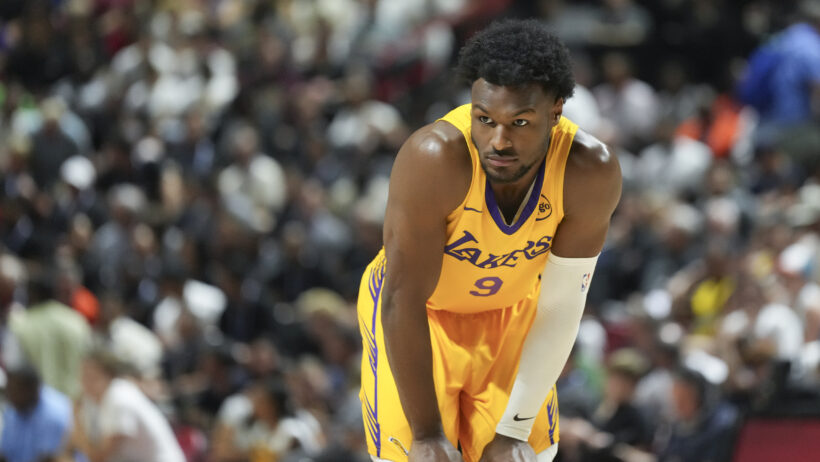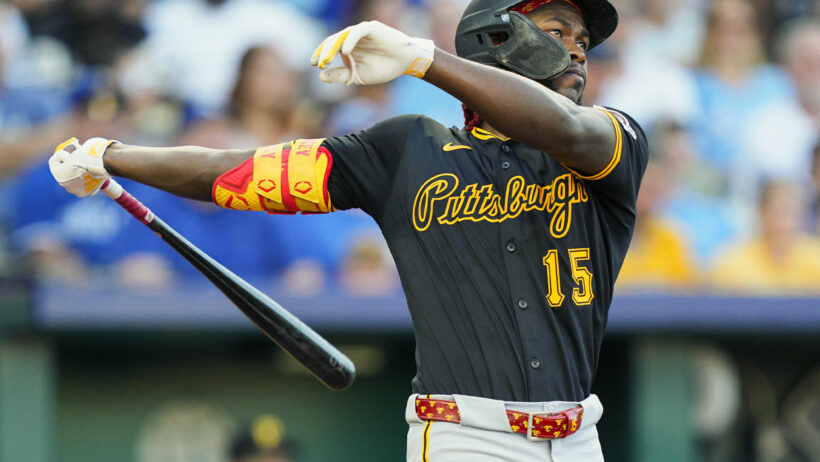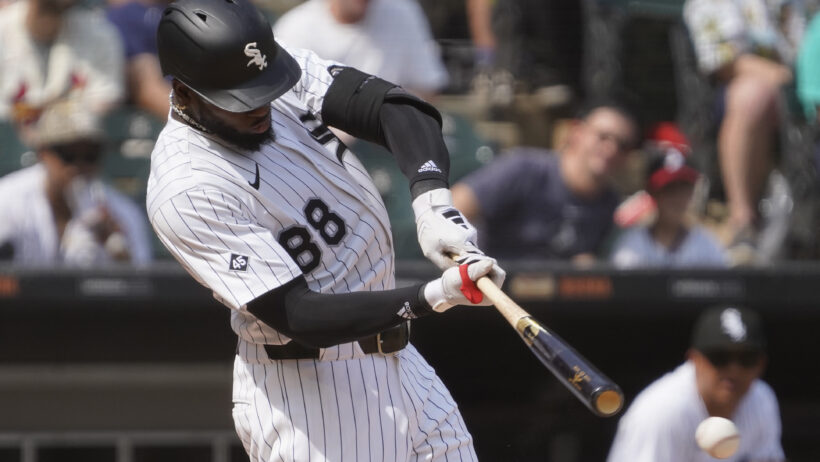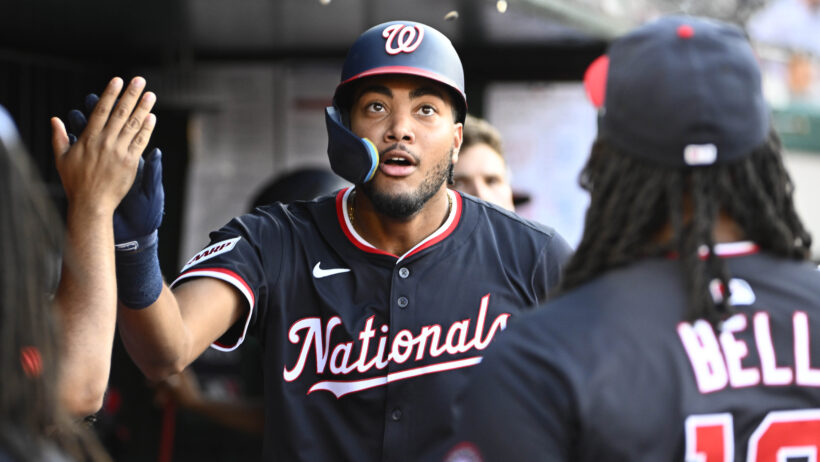Starter-Relievers, Launch Angle & Mega Shifts: Exploring the Shape of “New Moneyball”
By Sascha Paruk in MLB Baseball
Published:
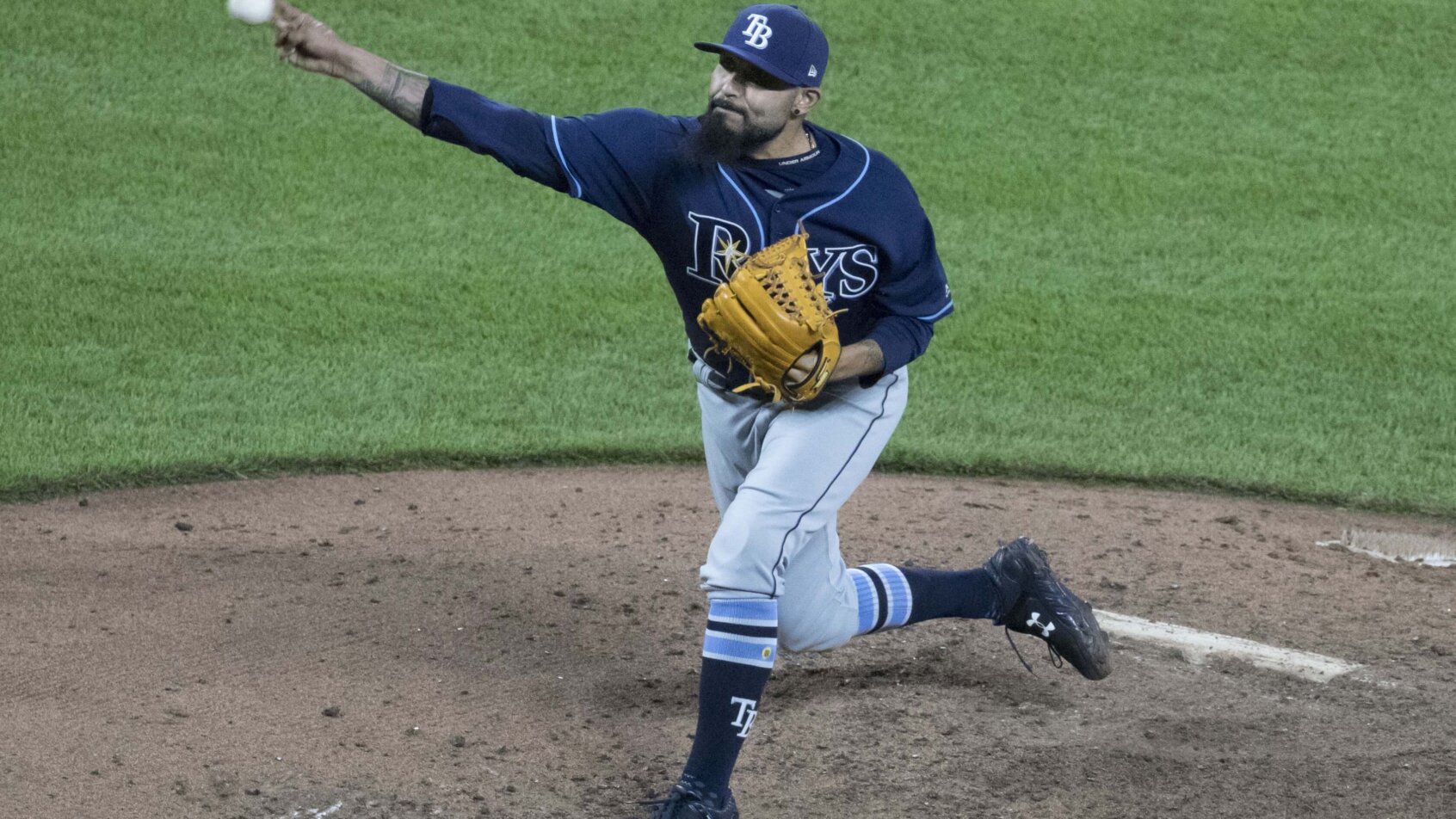
- Billy Beane and the Athletics proved years ago that small-market teams can bridge the talent gap by emphasizing certain statistics.
- Now that the secrets to the original “moneyball” are well known, finding a new advantage requires innovation and creativity.
- How are teams and players gaining an edge, or at least attempting to, in 2018?
Baseball isn’t always the fastest sport to adopt new ideas. In a lot of ways, the game looks exactly the same today as it did 100 years ago. But the way managers, front offices, and players approach the game has changed significantly, even if it some of the innovations can’t be seen with the naked eye.
Around the turn of the century, the “moneyball” system of Billy Beane and the Oakland Athletics revolutionized the concept of “value” when it comes to major-leaguers, putting increased importance on on-base percentage and slugging percentage, and much less on batting average, stolen bases, and defense. Oakland filled its roster with unheralded players who were undervalued by the rest of the league, and the results spoke for themselves.
In eight seasons from 1999-2006, the small-market A’s and their relatively miniscule payroll …
- won four AL West titles,
- made five playoff appearances, and
- finished above .500 in all eight seasons.
Eventually, the rest of the league caught on, and now every franchise employs something of a moneyball approach to roster-building.
That’s forced the more cash-strapped teams to innovate further, or at least try to, in an effort to bridge the talent gap between themselves and the likes of the Yankees, Red Sox, and Dodgers. It’s also led to individual players taking new approaches to elementary parts of the game — like swinging a bat — in order to increase their own value in the modern MLB.
In essence, it’s led to a series of innovations that we’re deeming “new moneyball,” which is comprised of the following trends.
Relief Pitchers Are Starting Games
It’s no secret that the first inning is the highest scoring inning, and neither is the cause: it’s the only inning in which both teams’ best hitters are guaranteed to come to the plate. This year, the Tampa Bay Rays figured out that, against certain right-hand-heavy lineups, they can increase their chances of getting out of the first inning unscathed by “starting” reliever Sergio Romo (who’s historically been tough on righties) and then inserting the would-be starter at some point in the second.
While the theory makes complete sense, the results have been mixed. In the first four games, Tampa went 2-2, and Romo wound up with a 10.80 ERA, .276 opponent batting average, .380 OBP, and three walks over 3.1 innings.
| Sergio Romo Starts | Final Score | Innings Pitched | Earned Runs |
|---|---|---|---|
| @ Angels (May 19) | 5-3 W | 1.0 | 0 |
| @Angels (May 20) | 5-2 L | 1.1 | 0 |
| vs Orioles (May 25) | 2-0 L | 0.2 | 1 |
| vs Orioles (May 27) | 8-3 W | 0.1 | 3 |
| Totals | 2-2 Overall | 3.1 | 4 (10.80 ERA) |
Those inflated numbers are largely the product of one bad outing against the Orioles, though, when he gave up three earned runs and only recorded one out. He was also the victim of an unlucky .500 BABIP (batting average on balls in play). In two starts against the Angels, he didn’t give up a run or a hit in 2.1 innings, and he struck out six of the nine batters he faced. His last start against the Mariners featured another 1.1 innings of hitless, scoreless ball.
The early returns from the experiment are encouraging enough that the Rays will likely keep it up for the remainder of the season, instead of adding another actual starter to their undermanned pitching staff.
The results against the Angels, meanwhile, could lead to more teams trying it out when Mike Trout and company are in the opposing dugout.
LA has one of the most right-handed-heavy lineups in the majors, and is also heavily dependent on the guys at the top of the order for production (i.e. Trout and Justin Upton). Starting a reliever who’s dominant against righties makes a ton of sense against the Angels.
Starters Are Being Pulled Earlier
Whether teams choose to “start” their starter in the first or second inning, the chances of him lasting into the seventh and eighth are getting lower and lower.
That’s not because pitchers are losing endurance, it’s because the numbers say that it’s very risky to let pitchers face the opposing lineup for a third time. Indeed, every time through the order, batters become more likely to get on base.
According to Mike Petriello of MLB.com, the average wOBA (which stands for “weighted on-base average” and measures offensive production per plate appearance) for starting pitchers is lowest the first time through the order, and increases with each successive time.
| Time through the Order | MLB Average wOBA (2017) |
|---|---|
| 1st (Starting Pitchers) | .314 |
| 2nd (Starting Pitchers) | .332 |
| 3rd (Starting Pitchers) | .340 |
| 1st (Relief Pitchers) | .309 |
One of the most high-profile instances of a starter getting an early hook — one that would have been hard to explain a five years ago — came in Game 7 of the 2017 World Series. Houston starter Lance McCullers Jr. was pulled after 2.1 innings, even though he had a shutout going and the Astros were up 5-0. Manager AJ Hinch smelled the danger. McCullers had given up three hits and plunked four Dodgers. Hinch realized McCullers didn’t have his best stuff and wasn’t about to stick around to see LA tee off a second and third time through.
His control issues are sprinkled into the highlights below.

First-year Phillies manager Gabe Kapler took the trend to a whole new level early in 2018. In on notable instance, he pulled ace Aaron Nola after just 68 pitches even though Nola was pitching a shutout and the Phillies had a five-run lead (that they would go onto blow).
Kapler’s over-eagerness illustrates an important point: to be effective, this general trend has to be tailored to the specifics of the situation. You will not, and should not, see pitchers like Nola, Justin Verlander and Max Scherzer getting pulled in the sixth just because the lineup is about to turn over. But when it comes to mere mortals, making the switch before the first signs of trouble is often the right call.
As Petriello notes, just last year, the Diamondbacks’ Taijuan Walker had a 3.12 ERA over the first five innings, and a 6.16 ERA from the sixth inning on. Meanwhile, Milwaukee’s Brent Suter “allowed a .240 wOBA the first time through — an elite number that’s well better than the starting pitcher average of .329 — and an enormous .484 wOBA the third time and beyond.”
Certain starters need to be saved from their late-inning selves, and fans are starting to see it more routinely with each new season.
Hitters Are Increasing Their Launch Angle
By now, the term “launch angle” has become ubiquitous in baseball circles. For the uninitiated, it’s literally the angle at which hitters are swinging their bat. An uppercut swing produces a higher “launch angle” (and more flyballs), while a flat swing produces a lower launch angle (and more groundballs).

For decades, conventional wisdom was that flatter swings were ideal because they kept the barrel of the bat in the strike zone longer. But when sabermetricians (starting with the second iteration of the moneyball Athletics circa 2011) clued in that extra-base hits, home runs in particular, are disproportionately more valuable than singles, finding players who put the ball in the air became priority number one.
The response from hitters has been swift (by baseball standards), and some of the biggest mashers in the game are taking a modified Patrick Henry approach at the plate: “Give me flyballs or give me death!”
As Dodger third baseman Justin Turner told Dave Sheinin of the Washington Post, “You can’t slug by hitting balls on the ground. You have to get the ball in the air if you want to slug, and guys who slug stick around, and guys who don’t, don’t.”
“You have to get the ball in the air if you want to slug…” — LA Dodgers third baseman Justin Turner.
Turner has been joined by the likes of Daniel Murphy and 2015 AL MVP Josh Donaldson in the “fly ball revolution.” The Bringer of Rain told Sheinin that every groundball he hits is a mistake: “Groundballs are outs. If you see me hit a groundball, even if it’s a hit, I can tell you: It was an accident.”
While many batters who have increased their launch angle claim that they haven’t changed their swing (see Scooter Gennett), the reality is that the average launch angle across the league increased from 10.0° in 2015 to 10.8° in 2016 to 10.9° in 2017, per the Chicago Tribune/MLB Statcast, and home-run totals have risen right along with it.
| Season | Average MLB Launch Angle | Total Home Runs |
|---|---|---|
| 2015 | 10.0° | 4,909 |
| 2016 | 10.8° | 5,610 |
| 2017 | 10.9° | 6,105 |
Those inflated numbers are largely the product of one bad outing against the Orioles, though, when he gave up three earned runs and only recorded
Shifts Are More Popular And More Pronounced Than Ever
One of the reasons groundballs equal outs, as Donaldson put it, is that teams are shifting their infielders more than ever, putting the defense in the perfect position (statistically speaking) to prevent anything on the ground from getting through.
The data from FanGraphs indicates that shifts became ten times more common from 2011 to 2016, and managers are getting more and more bold when it comes to leaving acres of the field completely uncovered. It’s not uncommon for all four infielders to be on the first-base side of second these days, leaving the pitcher and catcher as the only defenders within 100 feet of third base.
In addition to putting all four infielders on one side of the field, a few teams have started moving an infielder out of the infield entirely. Reddit user TPMD uploaded the following image of a shift the Mariners employed against Joey Gallo in mid-May. The second baseman is playing shallow right-field.
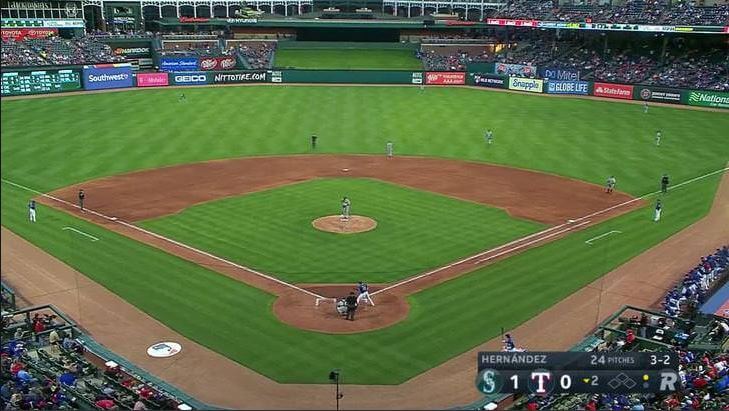
The Astros used an even more pronounced version of the four-man outfield against Gallo during the first week of the season, as shown in the following image from FanGraphs.
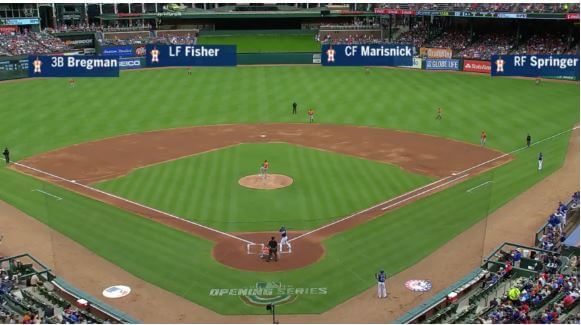
The concept of a four-man outfield dates back decades, but has never really caught on. That may be starting to change now with flyballs becoming all the rage. If the early data says it’s working against Gallo, expect to see similar approaches become the norm when guys like Matt Carpenter, Kyle Seager, and Christian Villanueva (i.e. extreme flyball hitters) are at the plate.
What’s Coming Next?
While starter-relievers, super shifts, and launch angle have already caught on, there are traces of other budding trends that could change the face of modern baseball in short order.
For instance, teams have experimented with slotting “power hitters” — players you would have batted third or clean-up in decades past — in the leadoff spot, guaranteeing they receive the maximum number of plate appearances possible.
Bryce Harper has hit leadoff for the Nationals nine times in 2018; catcher-turned-left fielder Kyle Schwarber hit first for the 2017 Cubs in 26 of their first 27 games; and first baseman Carlos Santana manned the leadoff spot for the 2017 Indians’ first 35 games.
Even the Yankees experimented with Aaron Judge hitting leadoff in the 2018 preseason.

The obvious downside of having a bat like Harper’s at the very top of the order is that his first plate appearance is guaranteed to come with no one on base. But the way opponents were pitching around him when he was batting second or third (27% walk rate in mid April), the Nats had to try something different.
Have you noticed any other innovations that are changing the way baseball is played? Join the discussion in the comments section below, or let us know on Facebook or Twitter.

Managing Editor
Sascha has been working in the sports-betting industry since 2014, and quickly paired his strong writing skills with a burgeoning knowledge of probability and statistics. He holds an undergraduate degree in linguistics and a Juris Doctor from the University of British Columbia.
